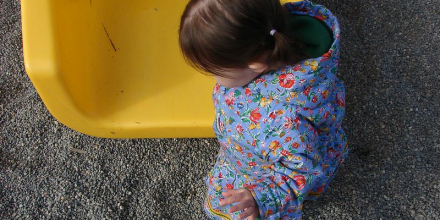Impact of formal childcare price and informal childcare availability on mother's work-childcare arrangement

Event details
Seminar
Date & time
Venue
Speaker
Contacts
The purpose of this paper is to examine the responsiveness of labour supply and childcare utilisation of mothers to formal child-care price and informal childcare (IFCC) availability in Australia. According to our data employed, 44.56 per cent of households with children under 5 experience difficulty meeting the cost of formal childcare(1) whist the average price of formal childcare or paid childcare almost doubled in last ten years(2). Alternatively, IFCC mainly provided by grandparents can substitute or supplement formal childcare. IFCC is more affordable than formal childcare though it may be constrained by its availability.
We stress the triangle endogeneity of purchasing formal childcare, using IFCC, and mothers’ working decisions. Accordingly, we follow (Blau & Robins 1988) and (Ribar 1992) and model mothers’ labour supply and utilisation of formal care jointly. They are classified into multiple categories by working status and childcare utilisation status. Those different work-childcare patterns are estimated in a multinomial logit model in which the likelihood change of a mother chooses any of those patterns can be estimated via calculating the marginal effect (ME) from formal childcare price, IFCC, or other variables. Additionally, we construct a proxy variable measuring the shadow cost of IFCC, see (Kalb & Lee 2008) and (Breunig, Gong & King 2012).
Childcare price is not examined with significant impact on mothers’ work-childcare arrangement in our baseline sample like many other similar studies in Australia whereas the coefficient of which becomes significant after narrowing the sample to be more homogeneous. Applying the findings with the policy environment, the ever-increasing childcare price level in recent years, which is very likely the consequence of the Child Care Subsidy (CCS) implementation and the increasing CCS rate, will discourage mothers to work. On the flip side, higher IFCC availability increases the probability of mothers’ labour force participation.
(1)If a respondent rates 6 or higher in the self-rated question assessing the difficulty in the cost of child care ranged 0 to 10 in HILDA, it will be recognised as a household find difficulty in the cost of formal childcare.
(2)See details from website of Department of Education.
Yuyang Chen is a PhD candidate in economics and econometrics and a sessional staff at the Faculty of Business, Government, and Law at the University of Canberra. He has a Bachelor of Management and a Master of Management. In 2017, he won the National Scholarship of China and the First Academic Prize of the Jilin University of Finance and Economics. Yuyang was a volunteer language teacher and Assistant Principle and at Australian School of Contemporary Chinese in Canberra from 2018 to 2019. His PhD studies focus on the impact of informal childcare on the welfare of elders and their families both in Australian and Chinese contexts.
Updated: 16 July 2024/Responsible Officer: Crawford Engagement/Page Contact: CAP Web Team










